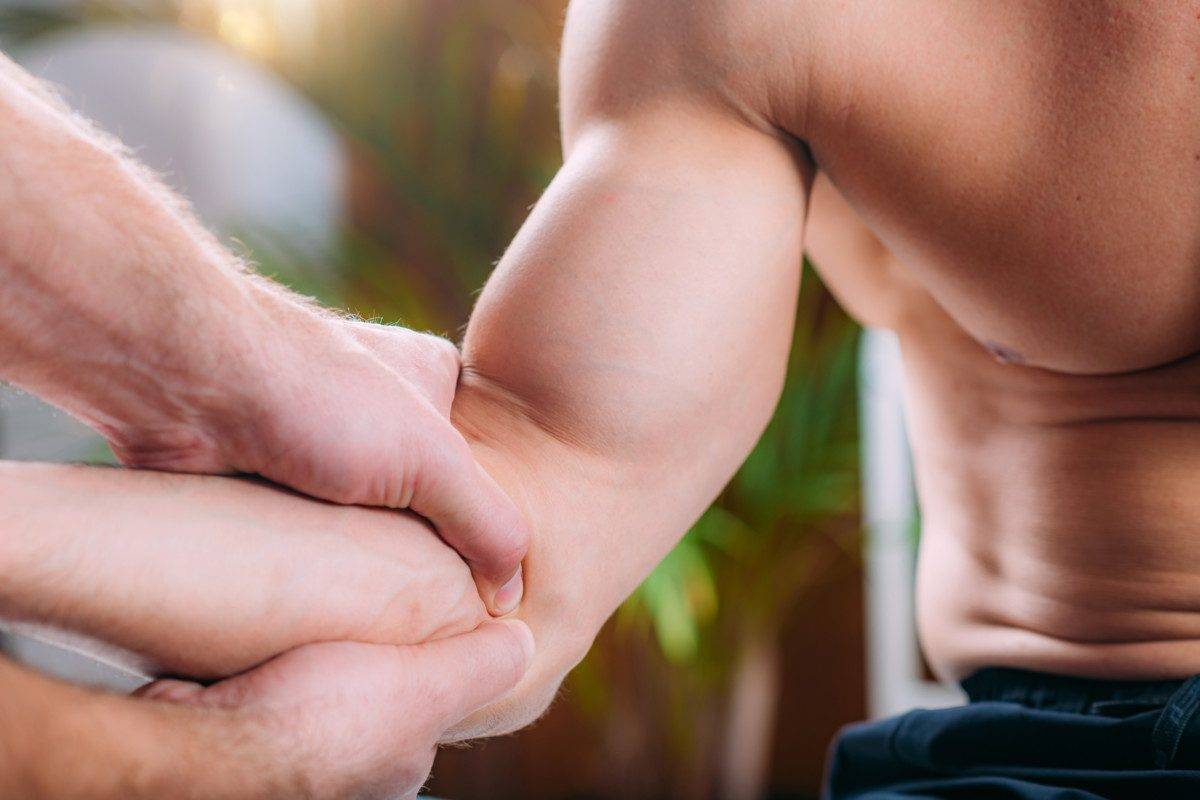By Megan White, RMT
Cubital tunnel syndrome is likely not a condition you’re familiar with, but you have probably heard the term funny bone because you know quite well how it feels when you hit it inadvertently! The same structures that create that ‘funny’ feeling are what we look at when we’re speaking of the cubital tunnel. What happens when you bang or bump your elbow and that electric pain shoots down your arm? You’re actually hitting a nerve. This nerve is the ulnar nerve and it is responsible for the sensation on the anterior (palm side) of your ring and pinky fingers, part of the palm, and the underside of the forearm. Some of the major nerves in the body, such as the ulnar nerve, are not microscopic. The ulnar nerve runs from your neck, down your arm, through a groove on the inside of your elbow (the cubital tunnel), and then down your forearm to your fingers. It is right around the cubital tunnel where the nerve is quite exposed, which is why when that area is knocked or compressed against something, can the nerve be easily irritated.
The ulnar nerve originates at the brachial plexus, a large bundle of nerves that exits the side of your neck and forms the three major nerves that run down the arm. When the ulnar nerve passes through your elbow it is at its most superficial and most vulnerable. It is directly below the surface of the skin here with very little protection. There is a small groove in the inside of your elbow called the cubital tunnel, which is just at the inside of the medial epicondyle (where it connects with your ulna in your forearm) of your humerus bone. There is very little protective structure here, and your ulnar never lays right in that groove, leaving it easily susceptible to bumping or even longer-term injury.
Now that we know more about this entire elbow/nerve structure, we can talk a bit about why people can feel numbness, tingling, or even loss of strength in their ring and pinky finger, particularly after their elbow has been bent for a period of time.

A few different pieces can cause or exacerbate cubital tunnel syndrome:
- Excessive pressure on this structure: leaning on your elbow in a bent position for extended periods of time can cause the ulnar nerve to become compressed and irritated. People who sit in chairs for long periods when using the armrests, for example. Office workers and truck drivers are very prone to developing cubital tunnel syndrome for this reason
- Prolonged overstretching: sitting with your elbows very bent for an extended amount of time can cause the nerve to become overstretched. This can look like sleeping with your hand under your pillow, holding a phone to your ear, or using your cell phone for prolonged periods (break out those earbuds!).
Now that we understand more of those pieces, we can explore some of our options to prevent or treat cubital tunnel syndrome. The biggest, and easiest, thing you can do in terms of prevention is to simply stop bending the elbow so much, and by this, I mean full flexion of the elbow. Maybe easier said than done, but what we mean is when your forearm and your bicep are very close together or when you can touch your shoulder with the same hand. This can be very hard to do, especially when curled up sleeping, or using your cell phone. Work on being aware of your position, and taking the time to unbend your elbow and give it some space. Splinting or braces can help to keep the elbows straight during sleep if you really are a curl-up kind of sleeper.

Therapeutic Help
Some manual therapists – massage therapists, physiotherapists, and chiropractors – are trained in nerve gliding/flossing. These are exercises that can help to facilitate the smooth and regular movement of peripheral nerves in the body, which can help allow your nerves to glide more freely and relax potential nerve compression concerns.
Massage therapy can help also by relaxing some of these muscle structures surrounding the cubital tunnel. The muscles in our forearms and triceps can become tight due to irritation at the elbow, and so working on relaxing these muscles can help reduce scar tissue and some of this compression which is creating inflammation in the ulnar nerve.
If you notice that you are experiencing numbness, tingling, loss of strength, or sensation in your hand, don’t be afraid to bring it up to your massage therapist or chiropractor in your next appointment. It is definitely better to get ahead of this nerve compression before surgical intervention is required, and it often has very accessible and functional care options.

So – next time you are sitting at work, on your Adirondack chair on your deck, or driving for a long period of time – or maybe even on a lengthy phone call, move those elbows around! Stretch them out and UNBEND them. Make sure to keep that ulnar nerve happy and it shouldn’t cause you any problems unless, of course, you bump your funny bone.

